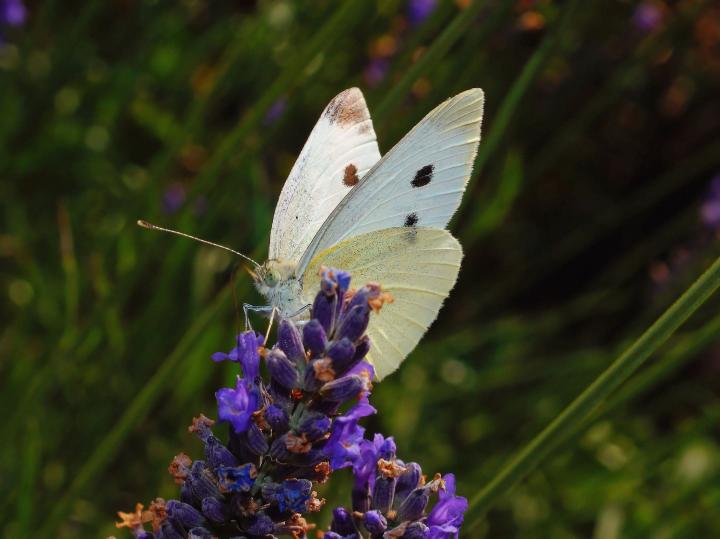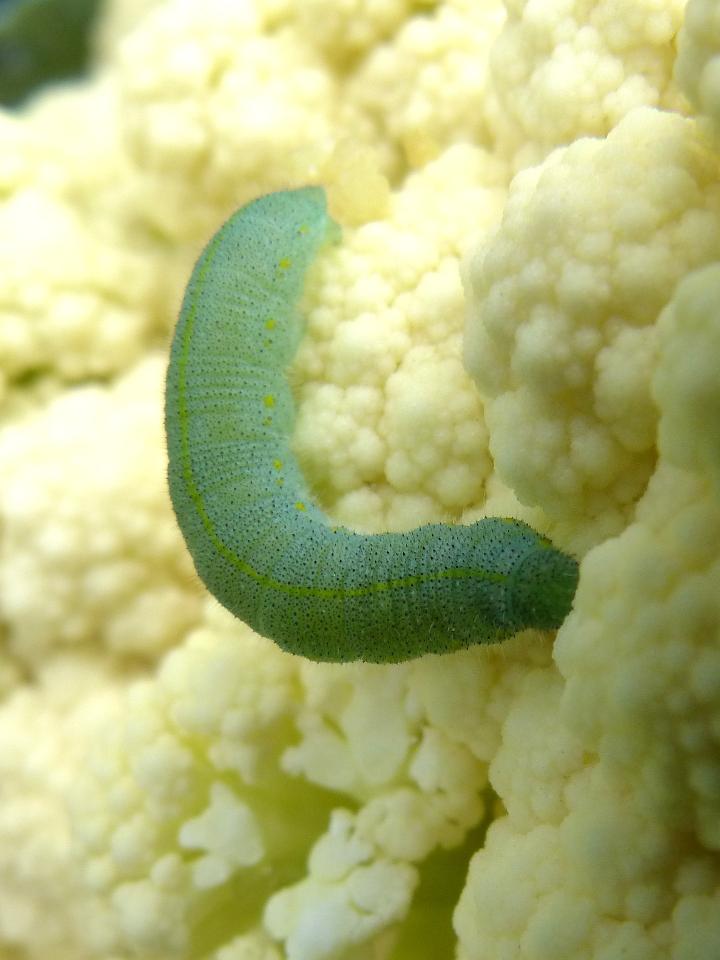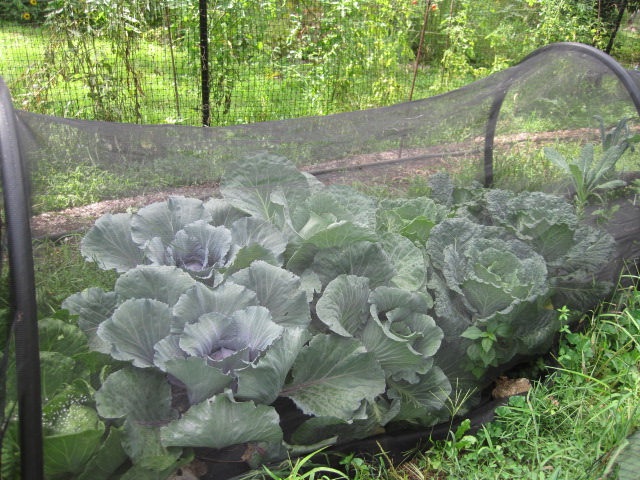Cabbage worms can be devastating to an otherwise-healthy garden. Here are a few things you might not know about these garden pests, as well as several ways to keep your plants safe from them. Remember: knowledge is power!
Advertisement
Bad News Butterflies
Everyone loves butterflies, but there is one butterfly that I bet you don't love, especially if you are trying to grow broccoli, kale, cabbage, or any other cole crop: the White Cabbage Butterfly (Pieris rapae), also known as the Imported White Cabbage Moth.
Since they can overwinter in garden debris, White Cabbage Butterflies are one of the first butterflies to emerge in the spring. Even before the broccoli was planted, I saw them flitting around the garden just looking for a likely place to lay some eggs.
Identifying White Cabbage Butterflies
The butterflies are small (1½–2 inches across) and yellowy-white with black markings. The female has two black spots on her forewing while the male has only one spot. The adult butterfly isn't the problem, it is the larvae that do all the damage.

The Dreaded Cabbage Worm
If you have seen velvety green worms on your kale or cabbage plants, you have cabbage worms. They blend in well with their green surroundings making them hard to spot until you start to notice large hunks of leaf are disappearing. They also poop as they eat leaving behind large amounts of dark brownish-green excrement called frass. Sometimes that is your first hint that something is wrong. Later on, they will burrow inside your cauliflower or deep into your cabbages, spoiling the head.

Like many of our garden pests, cabbage worms were accidentally introduced from Europe into Quebec in the 1860s and rapidly spread to most of North America. The imported cabbage moth/white cabbage butterfly has a 3 to 6 week lifecycle. Adult females lay white, rocket-shaped eggs singly on the underside of a brassica leaf. The eggs turn yellow as they mature, hatching after 7 days.
One busy female can lay 300 to 400 eggs in her 3 week lifetime and she will fly several miles looking for the right host plants. The larvae are hungry when they hatch out and eat constantly for 2 to 3 weeks before they pupate, turning into a butterfly about a week later. Then the cycle begins again. Is it any wonder that the kale looks like Swiss cheese and the broccoli is worm-infested?
Cabbage Worm's Natural Predators
Luckily, cabbage worms do have a few natural enemies, including yellow jackets, paper wasps, and birds. Many songbirds gobble up not only the worms but the butterflies as well. Chickens, ducks, and guinea fowl find the worms to be quite tasty, so once your plants are big enough to withstand some pecking and rough treatment from the birds, turn them loose in the garden.
Parasitic wasps lay their eggs on the worms and when those eggs hatch out, the larvae will eat the worms from the inside out, so leave any worms you see with white cocoons on their backs alone. They will eventually die a horrible death and the parasitic wasps will live to kill off more bad guys in your garden. It is a worm-eat-worm world out there!
How to Get Rid of Cabbage Worms
- You can resort to using diatomaceous earth, which cuts up any soft-bodied insect that comes in contact with it. Or you could try Bt (Bacillus thuringiensis var. kurstaki) a natural bacterium that kills caterpillars and worms. Both will need to be reapplied after rain.
- There are other natural controls, like handpicking the nasty worms off the leaves, which is tedious and you always miss some, especially in the broccoli. They hide among the florets and you usually don't notice them until you have cooked up a batch for company and someone finds a bloated white worm on their plate. Yum!
- Red-leaved cole crops are less attractive to the cabbage butterfly as a spot to lay her eggs, since they will not camouflage the baby worms well. She is a discerning mother I guess.
- Some people grow a trap crop of nasturtiums or mustard—plants the butterfly prefers—and when those plants are covered with worms they dispose of them. Companion planting with aromatic herbs such as thyme, sage, rosemary or oregano is said to repel the butterflies too.
- Covering plants with floating row cover works well. We bought extra wide reemay (a thin, cloth-like material) to cover our cole crops with since the broccoli gets so tall but in a really hot summer it can heat up too much under the cover.

We switched to using screen cloth to cover the plants and that has worked very well for us. It keeps the moths at bay and the brassicas worm-free!
- One clever idea I have seen is to make moth-shaped decoys out of plastic or paper and place them in the garden. Supposedly the butterflies are territorial and will not deposit their eggs if they think another female has staked her claim to that area. Make the decoys 2 inches across and be sure to mark them with 2 black spots on the upper wing. Here is a link to a page of printable decoys: Cabbage Butterfly Decoy. If you try this method, let me know how it works!
For more tips on dealing with cabbage worms, check out our Cabbage Worms Pest Page.













Comments